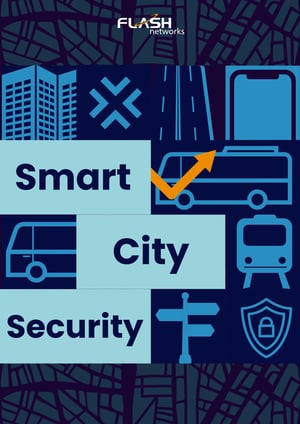
Smart City Security - Flash Networks
In order to safeguard connected smart city devices, it is crucial to implement comprehensive IoT security solutions that ensure protection from device to cloud.
Rather than relying on a single 'super solution' that fails to gain widespread acceptance, practical and simple yet secure solutions are more effective. These solutions should be easily adopted by OEMs and services. Key capabilities that should be included are as follows: Utilizing secure boot technology to prevent hackers from replacing firmware with malicious versions, thereby thwarting potential attacks. It is important to note that not all IoT chipsets come equipped with secure boot capabilities.
Implementing mutual authentication, whereby every time a smart city device connects to the network, it undergoes authentication before sending or receiving any data. Enabling security lifecycle management empowers service providers and OEMs to have control over the security aspects of IoT devices during their operation.

Benefits for the operator
Revenue increase
Cyber Security is an opportunity for network providers to increase their reputation and their revenue by creating monthly plans with added security.
No Installation needed
The security protection works seamlessly on any SIM card device, with no limitations on OS or CPU. Plus, it's compatible with all types of networks and transport technologies.
Brand Differentiation
Enterprise data-stealing has reached a staggering 24% for the year 2022. Flash Networks' Harmony Security Module allows operators to use this trend to enhance their portfolio.
Benefits for the user
Prevent Unauthorized Access
Flash Networks Harmony Security module protects any new connection at the connection initiation.
Nothing to Install on the Device
Peace of mind
With implemented Harmony Security end users can enjoy safe browsing. Enterprises can be calm that hacker and terrorist attacks can`t do damage to company network and devices.



Smart cities, a fusion of technology and data, bring forth a new era of connectivity and innovation. However, this interconnectedness also introduces a new frontier of cybersecurity threats.
The open nature of smart cities makes them enticing targets for cybercriminals. As cities become more reliant on technology, the risk of disruptions, financial loss, and data breaches increase.
Hackers can manipulate smart valves in wastewater systems, resulting in biohazard spills.
Data generated by devices like smart parking garages, EV charging stations, and surveillance feeds is a prime target for identity theft.
A denial-of- service attack (DoS attack) attempts to render a machine or network resource unavailable to its intended users by temporarily or indefinitely disrupting services of a host connected to the Internet.
Device hijacking attacks can be difficult to detect because in many cases, the attacker does not alter the basic functionality of the device. In the context of a smart city, a cyber-criminal could exploit hijacked smart meters to launch ransomware attacks on Energy Management Systems.
The Latest Attacks and Breaches
Insider threat incidents have risen 44% over the past two years, with costs per incident up more than a third to $15.38 million.
By 2025, 45% of organizations worldwide will have experienced attacks on their software supply chains, a three-fold increase from 2021.
Source: Checkpoint
Resources
Videos
Use Case
Security threat notification

Subscribers receive a notification with the operator's logo informing them that access to harmful destinations is blocked by the security platform.
